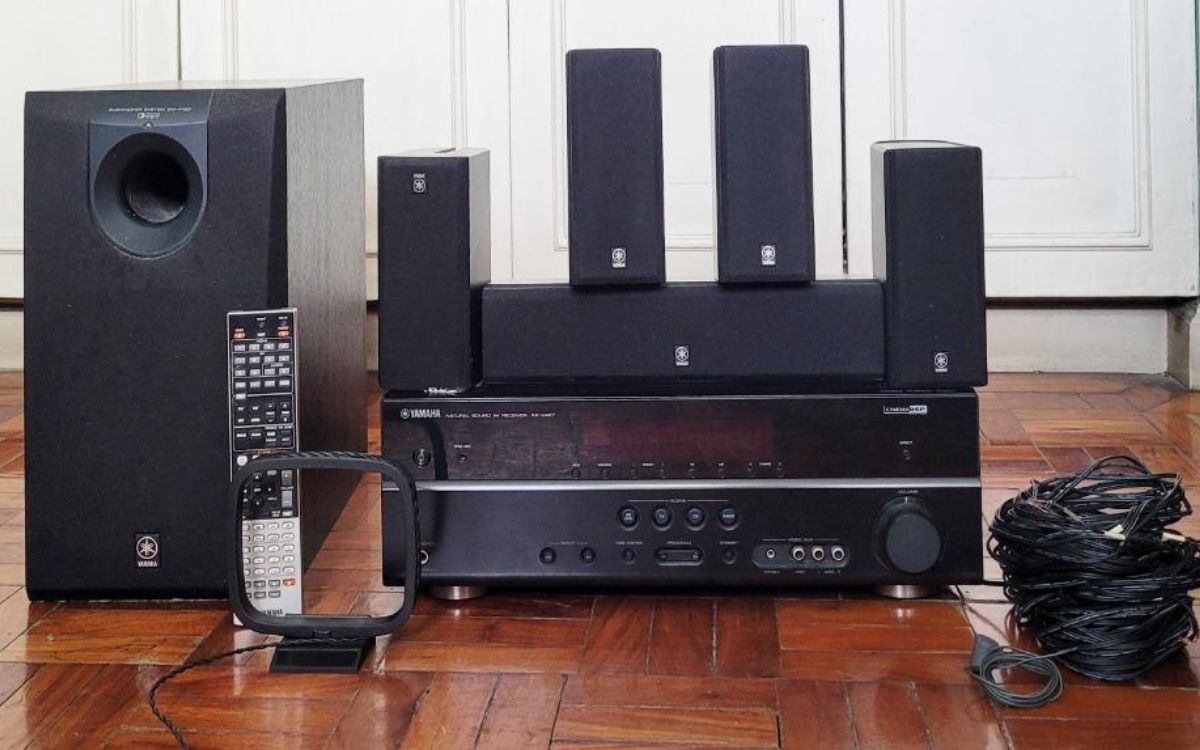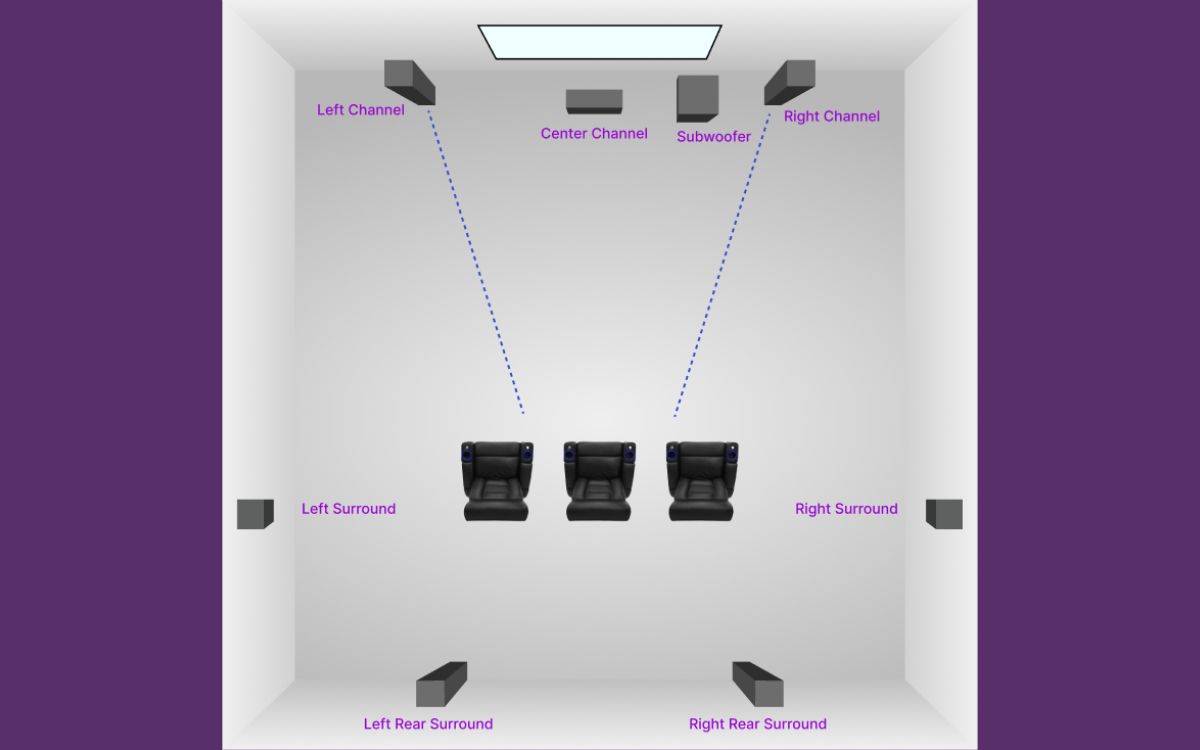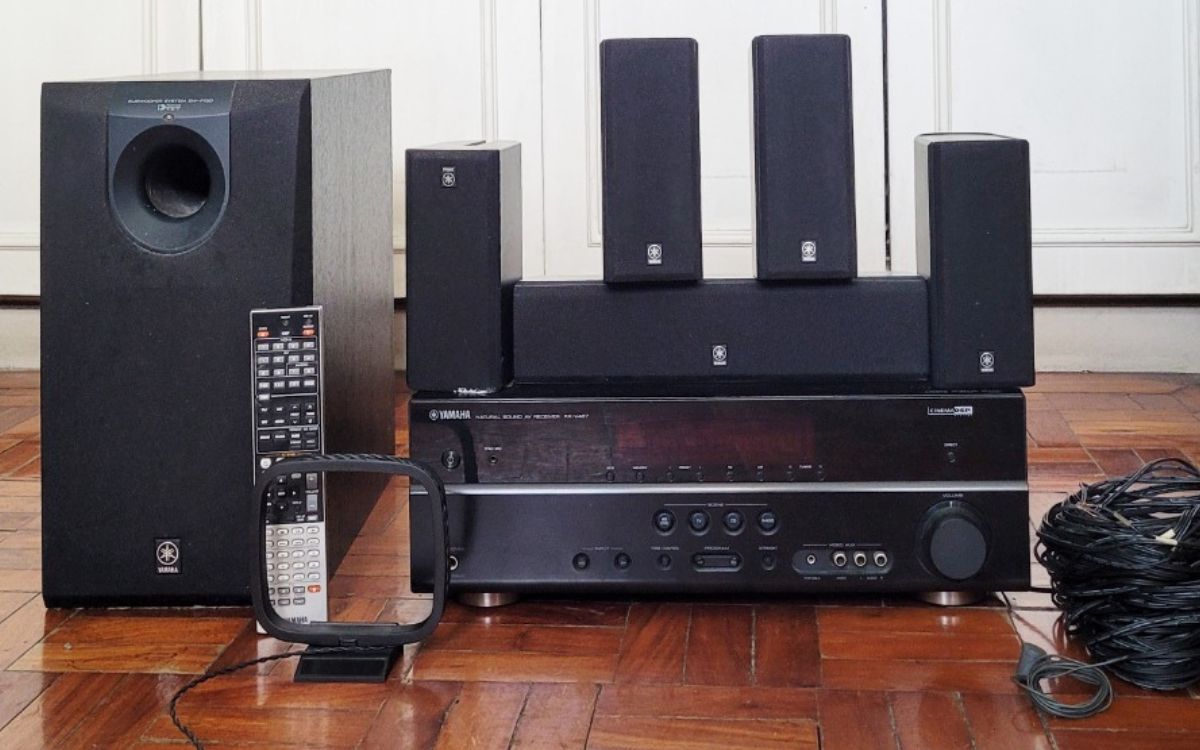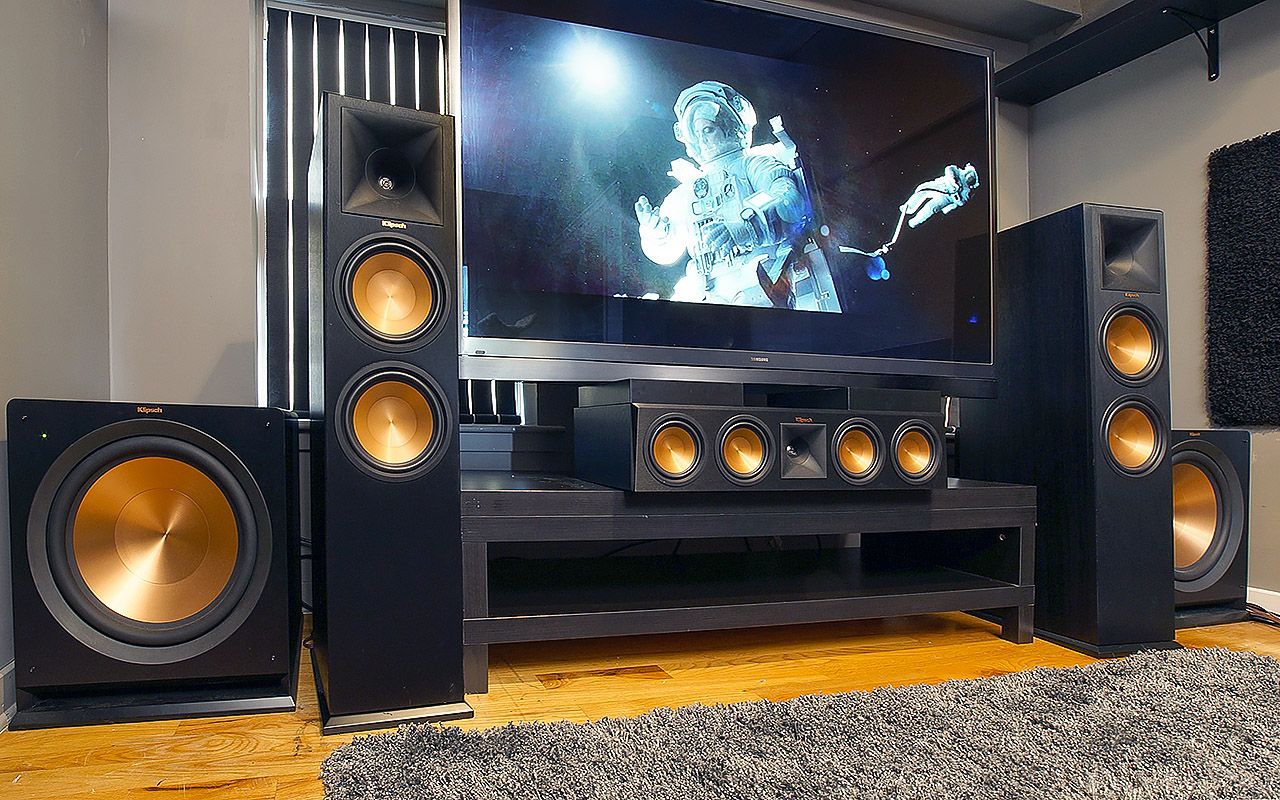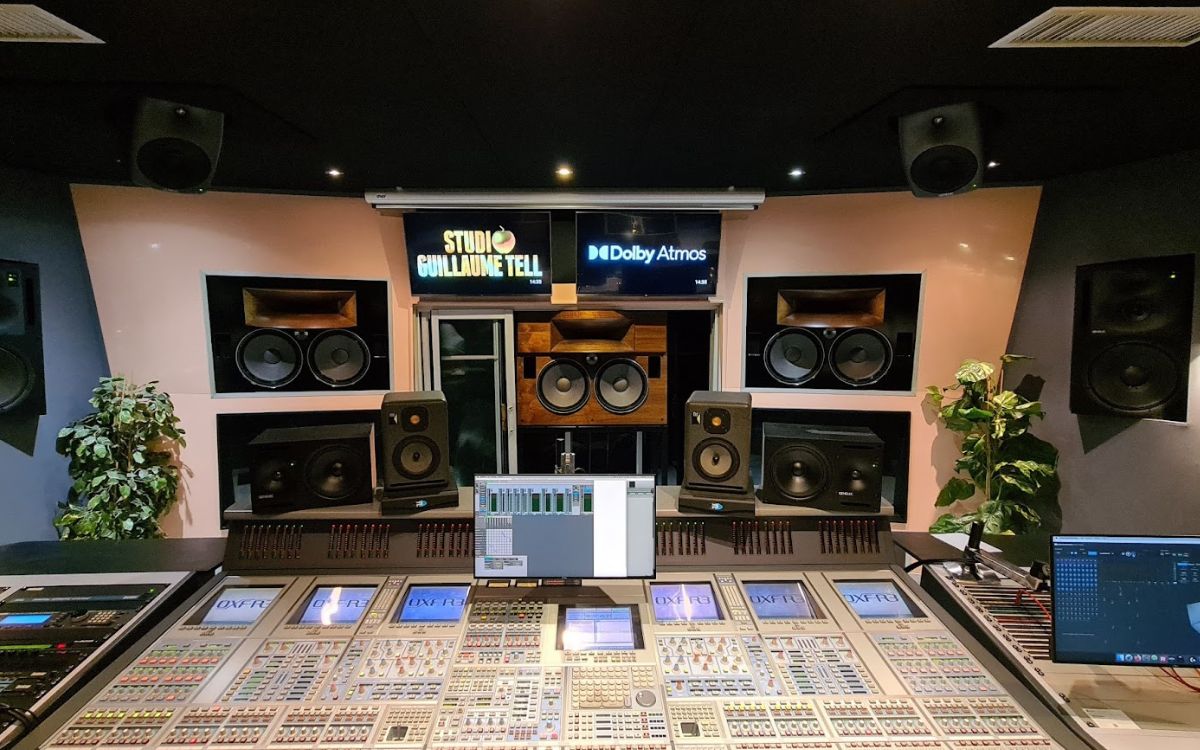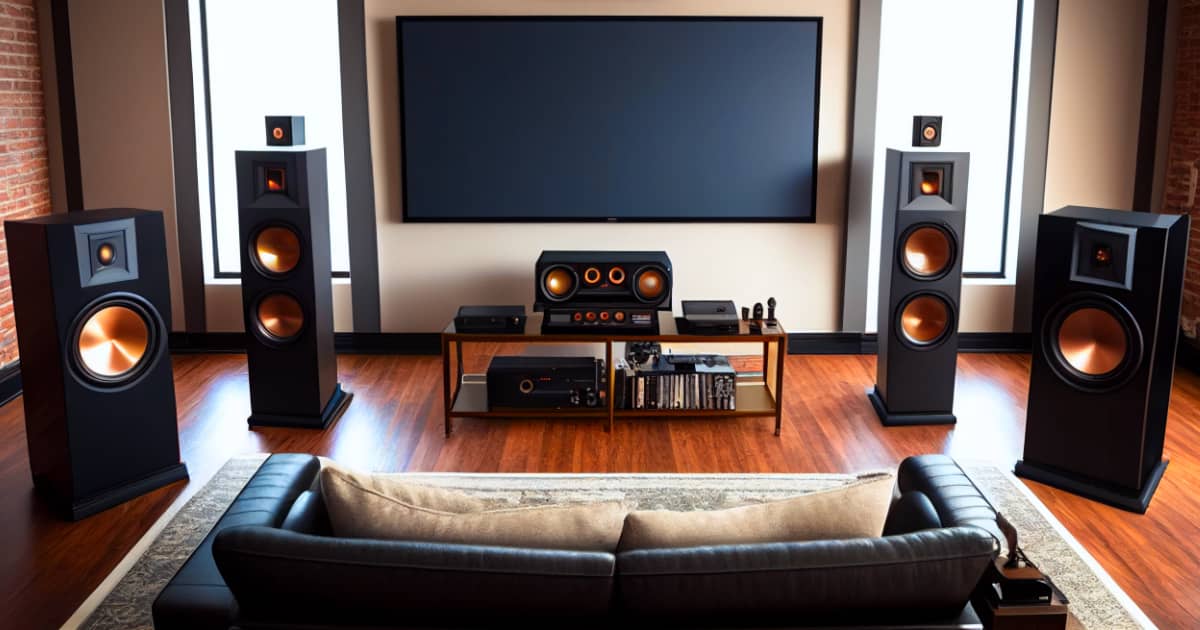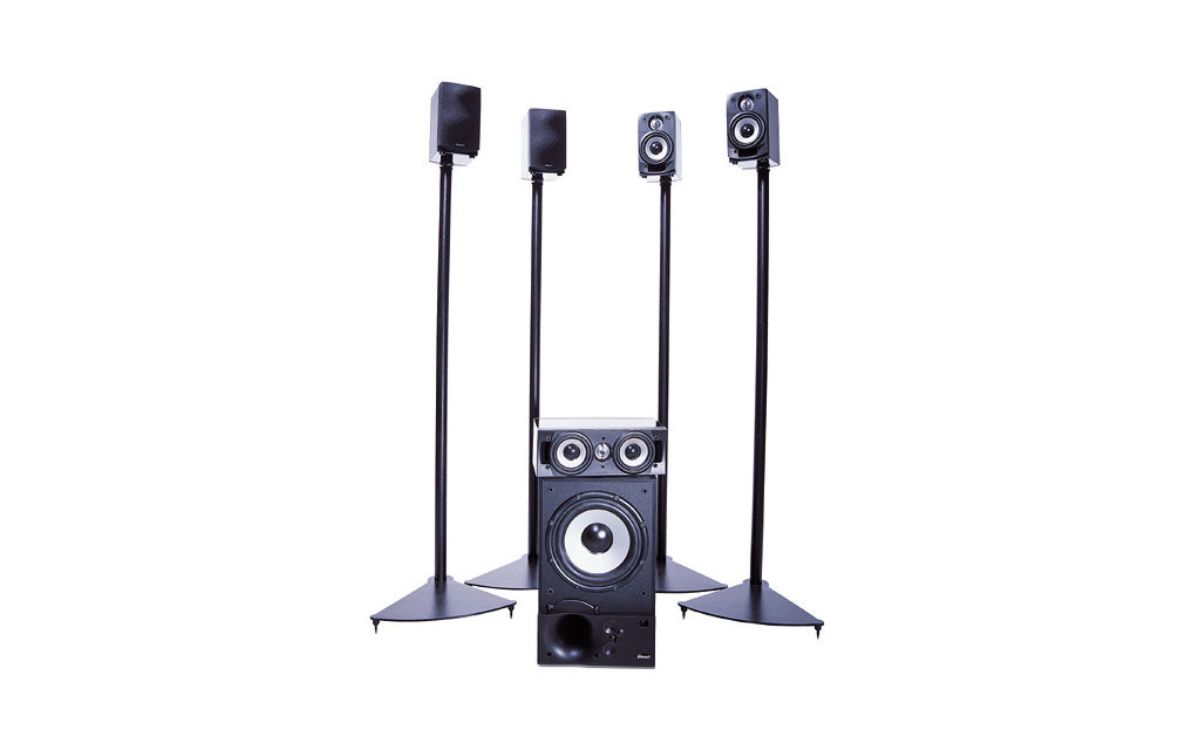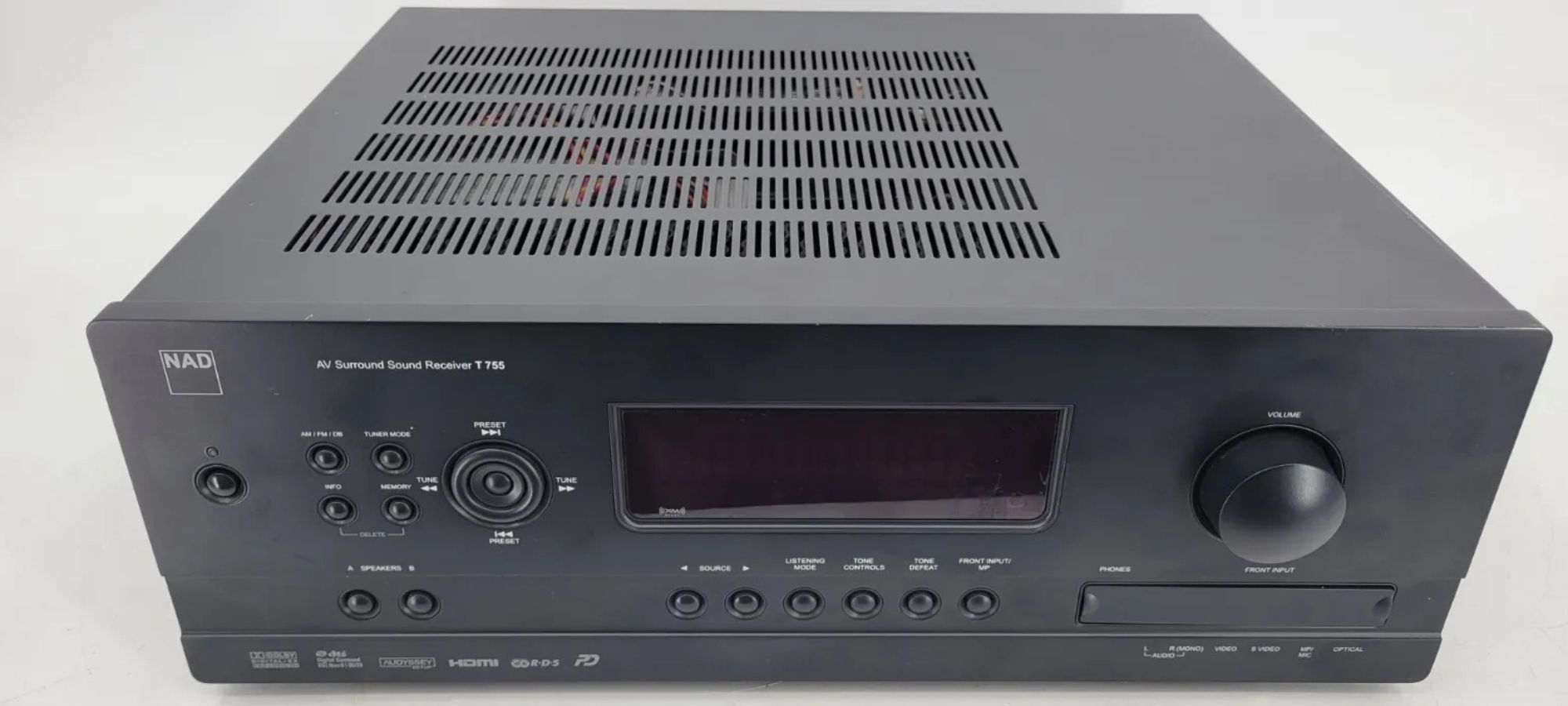Home>Production & Technology>Surround Sound>What Is Surround Sound System


Surround Sound
What Is Surround Sound System
Modified: January 26, 2024
Discover the immersive world of surround sound system and enhance your audio experience at home. Explore the benefits and features of surround sound technology for an unparalleled cinematic feel.
(Many of the links in this article redirect to a specific reviewed product. Your purchase of these products through affiliate links helps to generate commission for AudioLover.com, at no extra cost. Learn more)
Table of Contents
Introduction
Welcome to the immersive world of surround sound systems! If you’re a fan of movies, music, or gaming, you’re probably familiar with the term “surround sound.” But what exactly is surround sound, and why is it so popular?
Surround sound is a technology that creates a three-dimensional audio experience, allowing you to feel like you’re right in the middle of the action. It enhances the audio quality by enveloping you with sound from all directions, replicating the way we naturally hear sounds in the real world. This can greatly enhance your entertainment experience, giving you a sense of depth, realism, and immersion like never before.
Whether you’re watching a suspenseful thriller, listening to your favorite music artist’s live performance, or immersing yourself in the virtual world of a video game, surround sound can elevate your audio experience to new heights.
In this article, we will delve into the fascinating world of surround sound and explore how it works, the different components of a surround sound system, the various types of systems available, and how to choose the right one for your needs. We’ll also discuss the setup process and provide tips for enhancing your surround sound experience.
So, if you’re ready to take your audio experience to the next level, let’s dive into the world of surround sound and discover the wonders that await!
What Is Surround Sound?
Surround sound is a technology that creates a multi-channel audio experience, immersing the listener in a 360-degree sound field. It is designed to replicate the way sound is naturally heard in real-life environments, allowing you to hear sound effects, dialogue, and music coming from various directions.
Unlike traditional stereo audio, which uses only two speakers to create a left and right audio channel, surround sound systems utilize multiple speakers strategically placed around the room to deliver a more realistic and immersive audio experience. By placing speakers at different locations, such as in front, behind, and on the sides of the listener, surround sound systems can create the illusion of sound coming from all directions.
The concept of surround sound originated in movie theaters, where it was used to enhance the movie-watching experience. However, with advancements in technology, surround sound systems have become commonly available for home use as well.
Surround sound systems are typically denoted by numbers, such as 5.1, 7.1, or even 9.1, which indicate the number of speakers and subwoofers included in the system. The first number represents the main speakers, while the second number represents the number of subwoofers. For example, a 5.1 surround sound system consists of five speakers and one subwoofer.
One of the key features of surround sound is the ability to create a sense of depth and realism in audio. For example, in a movie, you might hear the sound of a car zooming past you from the rear speakers, or the rustling of leaves coming from the side speakers. This creates a more immersive and engaging audio experience, making you feel like you’re a part of the action.
Surround sound is not limited to movies alone. It is also widely used in gaming to provide a more immersive experience, allowing gamers to hear sounds coming from different directions, which can be vital for gameplay. Additionally, surround sound systems can greatly enhance the enjoyment of music, adding depth and dimension to your favorite tunes.
Now that we have a basic understanding of what surround sound is, let’s explore how it actually works to create this incredible audio experience.
How Does Surround Sound Work?
Surround sound works by using a combination of audio channels, speaker placement, and sound processing techniques to create a realistic and immersive audio experience. Let’s take a closer look at how each component contributes to the magic of surround sound:
1. Audio Channels: Surround sound systems utilize multiple audio channels to distribute sound to different speakers. The most common configuration is the 5.1 channel system, which consists of five main speakers (left, center, right, surround left, surround right) and one subwoofer. The left, center, and right speakers handle the main audio signals, while the surround left and surround right speakers provide the ambient and rear effects.
2. Speaker Placement: Proper speaker placement is crucial for creating an effective surround sound experience. The front speakers (left, center, right) are typically positioned in front of the listener, either above or below the TV or projection screen. The surround speakers are placed to the sides or behind the listener, angled towards the seating area. The subwoofer can be positioned anywhere in the room to distribute low-frequency sounds evenly.
3. Sound Processing: Surround sound systems utilize sound processing technologies, such as Dolby Digital or DTS (Digital Theater Systems), to encode and decode the audio signals. These technologies employ complex algorithms to separate and direct specific sounds to the appropriate speakers, creating a sense of directionality and spatial awareness. The sound processing also ensures a smooth transition between speakers, creating a seamless and immersive audio experience.
4. Encoding and Formats: Surround sound content, such as movies, music, and games, are encoded in specific formats to preserve the multi-channel audio. Common surround sound formats include Dolby TrueHD, DTS-HD Master Audio, and Dolby Atmos. These formats provide high-definition audio and support for additional overhead speakers to create a more immersive sound experience.
By combining the use of multiple audio channels, strategic speaker placement, advanced sound processing techniques, and specialized audio formats, surround sound systems create an audio environment that envelops the listener and enhances their overall entertainment experience.
Now that we have a better understanding of how surround sound works, let’s explore the various components that make up a surround sound system.
Components of a Surround Sound System
A surround sound system is comprised of several key components that work together to deliver a captivating audio experience. Let’s take a closer look at each of these components:
1. Audio Source: The audio source can be a DVD or Blu-ray player, a gaming console, a streaming device, or even a TV with built-in smart capabilities. It is responsible for playing the audio content, whether it’s a movie, music, or a game.
2. AV Receiver: The audio and video (AV) receiver is the central hub of a surround sound system. It receives the audio signals from the various sources and distributes them to the appropriate speakers. The AV receiver also acts as a control center, allowing you to adjust the volume, select different audio modes, and switch between different input sources.
3. Speakers: A surround sound system typically consists of multiple speakers, strategically placed around the room. The main speakers include the left, center, and right speakers, responsible for handling dialogue and most of the audio content. The surround speakers are positioned to the sides or behind the listener, immersing them in ambient and rear effects. Additionally, some systems may include overhead speakers or height speakers to deliver a more immersive sound experience.
4. Subwoofer: The subwoofer is a specialized speaker designed to reproduce low-frequency sounds, such as deep bass and rumbling effects. It adds depth and impact to the audio, enhancing the overall experience. The subwoofer can be placed anywhere in the room, as low-frequency sounds are omnidirectional and not location-dependent.
5. Cables and Wiring: To connect all the components of the surround sound system, you’ll need various cables, such as HDMI cables, speaker wires, and audio cables. These cables ensure that the audio signals are correctly transmitted between the source, AV receiver, and speakers.
6. Remote Control: Most surround sound systems come with a remote control that allows you to adjust and fine-tune various settings, such as volume, audio modes, and input sources. Some systems may also have mobile apps or offer integration with smart home systems for convenient control.
In addition to these core components, you may also consider optional accessories such as speaker stands, wall mounts, or soundproofing materials to optimize the performance and aesthetics of your surround sound system.
Now that we have explored the primary components of a surround sound system, let’s move on to discussing the different types of surround sound systems available.
Types of Surround Sound Systems
When it comes to surround sound systems, there are several different configurations and setups available. The type of system you choose depends on your preferences, budget, and the size of your space. Here are some of the most common types of surround sound systems:
1. 5.1 Channel System: The 5.1 channel system is the most popular and widely used configuration. It consists of five main speakers (left, center, right, surround left, surround right) and one subwoofer. This setup provides immersive sound, with the rear surround speakers adding depth and spatial awareness.
2. 7.1 Channel System: The 7.1 channel system takes the 5.1 setup one step further by adding two additional surround speakers, known as surround back speakers. This configuration allows for even more precise audio positioning and a more enveloping sound experience.
3. 9.1 Channel System: For those seeking the ultimate immersive audio experience, the 9.1 channel system is the way to go. This setup adds two additional overhead speakers, commonly referred to as height speakers, to create a more three-dimensional soundstage. This type of system is ideal for homes with dedicated home theater rooms.
4. Soundbar Systems: Soundbars offer a convenient and space-saving option for those who want to enhance their audio experience without the complexity of a multi-speaker setup. Soundbars are long, slim speakers that typically include multiple drivers and some even have built-in subwoofers. They can be placed below the TV or mounted on the wall, providing a simple and elegant solution for improved audio quality.
5. Wireless Surround Systems: Wireless surround sound systems minimize the need for running cables throughout the room. These systems use wireless technology to connect the speakers to the AV receiver, offering greater flexibility in speaker placement. This type of system is especially beneficial for those who want a clean and clutter-free setup.
It’s important to note that the type of surround sound system you choose should also be compatible with your audio sources and content. Make sure to check the specifications and capabilities of your devices to ensure proper connectivity and support for various audio formats.
Now that we’ve explored the different types of surround sound systems, let’s move on to the considerations to keep in mind when choosing the right one for your needs.
Choosing the Right Surround Sound System
Choosing the right surround sound system can greatly enhance your audio experience and bring your entertainment to a whole new level. Here are some key factors to consider when selecting a surround sound system:
1. Budget: Determine how much you’re willing to invest in a surround sound system. Prices can vary greatly depending on the brand, features, and quality of the components. Set a budget that aligns with your preferences and financial situation.
2. Room Size: Consider the size of the room where the surround sound system will be installed. Larger rooms may require more powerful speakers to fill the space with sound, while smaller rooms may benefit from compact systems. Ensure that the system you choose is suitable for the dimensions of your room.
3. Audio Quality: Pay attention to the audio quality of the system. Read reviews, listen to demos if possible, and consider the audio specifications of the speakers and AV receiver. Look for systems that support high-definition audio formats like Dolby TrueHD or DTS-HD Master Audio for the best sound fidelity.
4. Speaker Placement: Consider the layout and furniture arrangement in your room. Make sure there is enough space to position the speakers according to the recommended placement guidelines. Some systems may have more flexibility in speaker positioning than others, which can be beneficial in challenging room layouts.
5. Connectivity Options: Check the connectivity options available on the surround sound system. Ensure that it has the necessary inputs and outputs to connect with your audio sources, such as HDMI, optical, or RCA inputs. Consider if you need wireless connectivity options as well.
6. Future Expansion: If you anticipate expanding or upgrading your system in the future, consider a system that allows for scalability. Look for an AV receiver with multiple channels and support for adding additional speakers or subwoofers later on.
7. User-Friendly Features: Consider the user interface and ease of use of the surround sound system. Look for features like automatic speaker calibration, intuitive menu navigation, and compatibility with smart home systems for convenient control.
8. Brand and Reviews: Research different brands and models to find reputable manufacturers with positive customer reviews. Look for systems that have a good track record for quality, reliability, and customer support.
By taking these factors into account, you can ensure that the surround sound system you choose is well-suited to your preferences, budget, and space.
Now that you have an understanding of how to choose the right surround sound system, let’s discuss the setup process to get your system up and running.
Setting Up a Surround Sound System
Setting up a surround sound system may seem daunting at first, but with some careful planning and attention to detail, you can have your system up and running in no time. Here are the steps to follow for a successful setup:
1. Plan Your Speaker Placement: Determine the optimal positions for your speakers based on the recommended guidelines provided by the manufacturer. Typically, the front speakers should be placed at ear level, while the surround speakers should be positioned to the sides or behind the listening area. The subwoofer can be placed anywhere in the room as low-frequency sounds are non-directional.
2. Arrange Your Furniture: Position your furniture, such as the couch or chairs, in the ideal listening area. Make sure to leave enough space between the seating and the speakers for optimal sound dispersion.
3. Connect Your AV Receiver: Connect your audio and video sources, such as your DVD or Blu-ray player, gaming console, or streaming device, to the AV receiver using the appropriate cables. HDMI cables are commonly used for both audio and video signals. Follow the instruction manual of your receiver to ensure the correct setup.
4. Connect Your Speakers: Use speaker wires to connect each speaker to the corresponding terminals on the AV receiver. Ensure that the polarity is correctly matched (positive to positive, negative to negative) to maintain proper phase alignment and sound reproduction.
5. Calibrate Your System: Most AV receivers have built-in auto-calibration systems that can adjust the speaker settings based on your room’s acoustics. Follow the on-screen prompts or refer to the manual to run the calibration. This process measures the distance, volume levels, and equalization for each speaker to optimize the audio performance.
6. Set Up Subwoofer and Bass Management: Place the subwoofer in a location that provides even bass response throughout the room. Fine-tune the subwoofer’s volume and crossover settings to achieve a balanced and seamless blend with the main speakers. This ensures proper bass management and prevents audio distortion.
7. Test and Adjust: After the initial setup, play various audio content to test the system. Adjust the speaker levels and the overall volume to your preference. Experiment with different listening modes or audio presets to find the sound signature that suits your taste.
8. Cable Management: Conceal and secure the cables to minimize clutter and tripping hazards. Use cable clips, ties, or cable management solutions to keep the wires organized and hidden as much as possible.
Remember, patience is key during the setup process. Take your time to fine-tune the system settings and make adjustments as needed to achieve the best audio performance and immersive experience.
Now that your surround sound system is all set up, let’s explore some tips for enhancing your surround sound experience.
Tips for Enhancing Your Surround Sound Experience
Once your surround sound system is up and running, there are several tips and techniques you can employ to further enhance your audio experience. Here are some ways to maximize the enjoyment of your surround sound setup:
1. Optimize Speaker Placement: Experiment with the positioning of your speakers to achieve the best soundstage and imaging. Fine-tuning the distance, angle, and height of each speaker can greatly impact the audio quality and immersion. Consider using speaker stands or wall mounts for more precise placement.
2. Adjust the Listening Position: Your seating position relative to the speakers can significantly affect the audio experience. Sit in the sweet spot, where the audio is balanced and the imaging is most accurate. Align your ears with the height of the speakers and ensure there are no obstructions blocking the sound.
3. Calibrate with Room Acoustics in Mind: While auto-calibration can provide a good starting point, consider manually adjusting the EQ (equalization) settings to account for the specific characteristics of your room. Experiment with the bass and treble levels to achieve a more balanced sound that suits your space.
4. Experiment with Listening Modes: Most AV receivers offer various listening modes, such as Dolby Surround, DTS Neural:X, or stereo modes. These modes can enhance the audio reproduction based on the content being played. Try different modes to find the one that enhances your listening experience for movies, music, or gaming.
5. Enhance Surround Effects: Some AV receivers have additional features like virtual surround or upmixing capabilities. These features can expand the surround sound field, creating a more immersive experience even with stereo content. Play around with these settings to find the option that best complements your listening preferences.
6. Explore Sound Customization: Most AV receivers offer options to customize sound settings such as dialogue enhancement, dynamic range compression, or virtual speakers. Adjusting these settings can improve dialogue clarity, balance sound levels between loud and soft passages and simulate additional speakers if desired.
7. Upgrade Your Source Content: Take advantage of high-quality audio sources, such as Blu-ray discs or streaming services that offer lossless audio formats. These formats provide higher resolution and detail, maximizing the capabilities of your surround sound system and enhancing the overall audio experience.
8. Consider Room Acoustic Treatments: If you’re passionate about audio quality, you may explore room treatments like acoustic panels, bass traps, or diffusers to further optimize the sound in your listening space. These treatments can help reduce echoes, room resonances, and improve overall sound accuracy.
By following these tips and experimenting with different settings, you can fine-tune your surround sound system to deliver an immersive audio experience that matches your preferences and amplifies the enjoyment of your favorite movies, music, and games.
Now, let’s wrap up our discussion on surround sound systems with some common surround sound terminology you should know.
Common Surround Sound Terminology
When delving into the world of surround sound systems, it’s helpful to familiarize yourself with some common terminology. Here are a few key terms that you’re likely to come across:
1. Channels: In surround sound, channels refer to the number of audio signals or speakers used in the system. The most common configurations include 5.1 (five main speakers and one subwoofer), 7.1 (seven main speakers and one subwoofer), and 9.1 (nine main speakers and one subwoofer).
2. Subwoofer: A subwoofer is a specialized speaker designed to reproduce low-frequency sounds, particularly deep bass. It adds richness and impact to the overall audio experience.
3. Dolby Digital and DTS: Dolby Digital and DTS (Digital Theater Systems) are two popular surround sound formats. They utilize compression technology to encode and decode multi-channel audio for a more immersive sound experience.
4. Surround Speakers: Surround speakers are the speakers responsible for delivering ambient and rear sound effects. They help create a sense of depth and dimension by producing sound from the sides or behind the listener.
5. Center Speaker: The center speaker is primarily responsible for reproducing dialogue in movies, TV shows, and other audio content. It plays a crucial role in providing clear and focused vocals, ensuring that speech remains anchored on the screen.
6. HDMI (High-Definition Multimedia Interface): HDMI is a digital connection used to transmit high-quality audio and video signals between audio/video sources and AV receivers or display devices. It is the most common connection method for surround sound systems.
7. Decoding and Encoding: Decoding refers to the process of converting encoded audio signals back into their original form, allowing them to be played through the surround sound system. Encoding, on the other hand, is the process of compressing and packaging audio for storage or transmission.
8. Downmixing: Downmixing is the process of reconfiguring multi-channel audio to be compatible with systems that have fewer speakers. For example, if you have a 7.1 channel audio source but only a 5.1 channel system, the AV receiver will downmix the audio to fit the available speakers.
9. Virtual Surround: Virtual surround sound is a technology that attempts to recreate the immersive audio experience of a multi-speaker setup using just two speakers or headphones. It employs various digital processing techniques to simulate surround-like effects.
10. Dialog Enhancement: Dialog enhancement is a feature available on some AV receivers that boosts the clarity and intelligibility of speech, making dialogue more prominent and easier to understand, especially during action-packed scenes or when background noise is present.
By familiarizing yourself with these surround sound terms, you can better understand the specifications, features, and capabilities of your surround sound system, allowing you to make informed decisions and optimize your audio setup.
Now, let’s wrap up our comprehensive guide to surround sound systems!
Conclusion
Surround sound systems have revolutionized the way we experience audio in our homes. Whether you’re a movie enthusiast, a music lover, or a dedicated gamer, a well-designed surround sound system can transport you into a world of immersive sound and enhance your overall entertainment experience.
In this article, we’ve explored the fundamentals of surround sound, understanding how it works and the components involved. We’ve discussed the different types of surround sound systems available, ranging from the popular 5.1 channel setup to more advanced configurations with additional speakers. We’ve also provided tips for choosing the right system for your needs, setting it up, and enhancing its performance.
Remember to consider factors like budget, room size, and audio quality when selecting your surround sound system. Take the time to properly set up the speakers, calibrate the system, and experiment with different listening modes to achieve the best audio experience.
Additionally, we’ve introduced common surround sound terminology, ensuring you are equipped with the knowledge to navigate the world of surround sound systems confidently. Understanding these terms will assist you in making informed decisions when it comes to purchasing, configuring, and optimizing your system.
By embracing surround sound technology, you can transform your living room, home theater, or gaming space into a captivating audio haven. Immerse yourself in the rich, multidimensional sound that surrounds you and elevates your entertainment to new heights.
So, whether you’re ready to lose yourself in the heart-pounding action of a blockbuster movie, revel in the intricate details of your favorite music tracks, or become fully immersed in the virtual realm of gaming, a surround sound system will take you there, engulfing your senses and bringing your entertainment to life.
Embrace the power of surround sound and discover a whole new level of audio immersion in your home. Get ready to feel every explosion, hear every whisper, and be transported to worlds only limited by your imagination.

